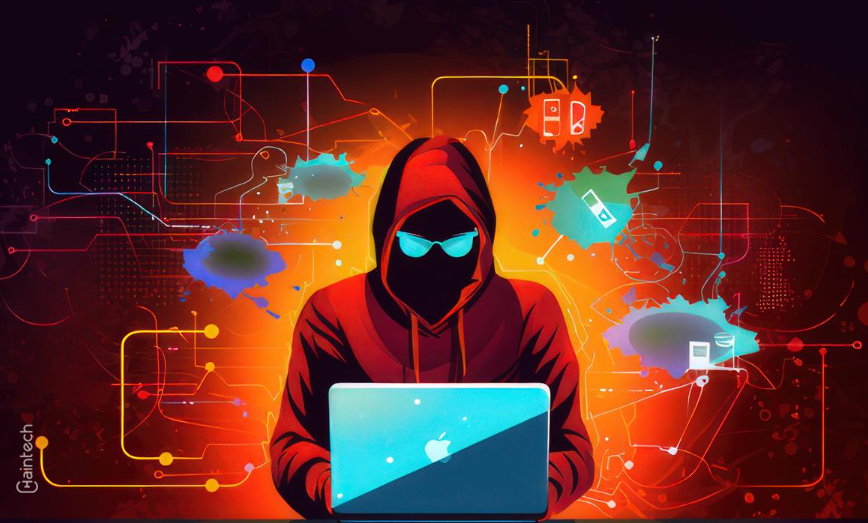1973 Bank Heist: Rosewell Steffen’s Sneaky Story Exposed

Introduction
In the history of finance, and apparently cybercrime, the year 1973 bears witness to a notable embezzlement case that unfolded within the Park Avenue branch of the Union Dime Savings Bank in New York. The protagonist of this intricate tale was Roswell Steffen. Roswell Steffen, the esteemed chief teller, was entrusted with the financial stewardship of the institution. Accused of orchestrating a groundbreaking embezzlement scheme through the means of a computer, Steffen’s alleged misdeeds have been etched into the chronicles of cybercrime history. However, as we delve deeper into the labyrinth of facts and unveil new information, a new narrative emerges. A narrative that challenges the prevailing notion of Steffen’s criminal sophistication, painting a picture of a heist far less intricate than the legendary status it has acquired over the years.
Against the backdrop of the early 1970s, an era where computers were still in their infancy, Steffen’s purported manipulation of this cutting-edge technology added an air of novelty to his transgressions. As we embark on the journey to dissect the true nature of Steffen’s actions, we find ourselves confronting a story that defies the conventional narrative. So, without any further ado, let’s dive right into the financial adventures of Rosewell Steffen.
First Computer-Driven Heist- Explained
In the landscape of the 1970s, a peculiar and daring narrative unfolded, etching the name of Rosewell Steffen into the books of technological misdeeds. Amidst the evolving role of computers in society, Steffen, a seemingly ordinary bank employee, pulled off what would become the first reported instance of a computer-driven heist.
The intrigue began with a news flash in 1973, capturing the attention of spectators. Here was a tale of exploitation, not of machines, but by them. Steffen, armed with access to customer accounts, smartly employed the novel technology to conceal his financial pilfering. The seemingly straightforward act of “shuffling” numbers within the system became his method, resulting in a sophisticated embezzlement exceeding $1.5 million over three years. This manipulation created a deceptive illusion of financial order, skillfully evading the scrutiny of both customers and management.
In the public eye, Steffen’s story was sensationalized as the first act of a computer genius, an elite hacker within the confines of a bank. However, delving beneath the surface of this forgotten chapter in tech history reveals a different truth. Far from being an elite hacker, as portrayed by his former employee, Steffen was a regular bank employee who discovered an unconventional avenue for forging money.
Execution of the Alleged Cybercrime
According to Ronald Goldstock, former assistant district attorney for New York County, Steffen’s embezzlement scheme was far less technologically advanced than previously believed. He would take customer account records and manipulate them manually, using simple techniques like physically altering paper records. He would also occasionally borrow money from dormant accounts, planning to pay it back later. This method was both low-tech and low-risk, allowing him to fly under the radar for an extended period. Goldstock also believed that Steffen never even touched a computer to execute this cunning plot.
As per the available resources, Steffen maneuvered through the transaction process using an electric typewriter-like machine. The heart of his manipulation lay in the manual adjustment of account balances, deftly altering stamped figures in customers’ passport-sized paper banking books. Post-transaction, he further concealed his tracks by physically manipulating the rolls of receipt-like paper, employing a “rip and paste” technique. Access to the vault, purportedly secured by a two-person protocol, proved no obstacle for Steffen, who wielded both the key and the combination. To dismiss any raised eyebrows, he employed a cover-up tactic, swiftly attributing discrepancies to mere data entry errors and rectifying balances using the same “rip and paste” method on alternate accounts. Unbeknownst to him, the curtain over his embezzlement might have remained intact had it not been for his penchant for high-stakes gambling. In unraveling the scheme during an undercover bookmaking operation, law enforcement exposed Steffen’s dual life as a prolific high roller, ultimately bringing the shadowy orchestration of his financial deceit into the harsh light of scrutiny.
Roswell Steffen’s Arrest & Legal Proceedings
The unraveling of Steffen’s embezzlement web commenced when his involvement in a sizable bookmaking operation drew the scrutiny of law enforcement. This inquiry laid bare Steffen’s extensive gambling endeavors, ultimately exposing the intricate threads of his embezzlement scheme.
Following the investigation, Steffen found himself facing the scales of justice, arrested, and charged with grand larceny and forgery. During his arraignment, he maintained his innocence, pleading not guilty and being held on a $20,000 bail. The surprise, however, unfolded in the subsequent chapters of his legal saga – serving only two months of his initially decreed three-year sentence.
In yet another unexpected turn, Steffen penned an article for the June 1974 edition of Bank Systems and Equipment Magazine, revealing the mechanics behind his covert larceny. Titled “How I Embezzled $1.5 Million… and Nearly Got Away With It” this exposé marked Steffen’s reemergence onto the public stage. Contrary to prior accounts and Ronald Goldstock’s recollection, Steffen’s narrative in the article introduces a new twist. In this version, he details a method involving a meticulous review of computer tapes to identify substantial deposits. Utilizing the system’s override, Steffen claimed to make corrections, diverting sizable sums, such as $50,000, for his gambling pursuits.
This audacious revelation not only contradicts earlier reporting but also sets the stage for Steffen’s unexpected second act – a transition from an ex-criminal to a consultant for the forces of justice, blurring the lines between perpetrator and advisor in the world of financial security. The tale of Rosewell Steffen, marked by legal twists and unexpected confessions, adds yet another layer of complexity to the narrative of one of the earliest documented instances of cybercrime.









